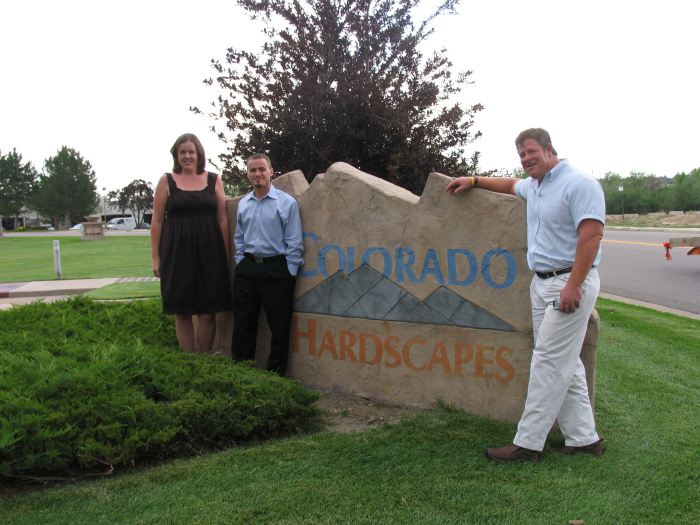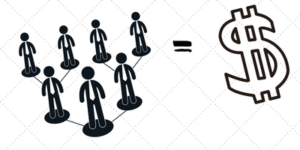All across the country leading decorative concrete contractors are going green — no matter what colors their clients request. Some contractors are emphasizing green marketing messages in their advertising, brochures, Web sites and sales presentations. This article examines two leading contractors to answer the question: Does green marketing give you a competitive advantage that wins business?

Case Study 1: Architectural Concrete Design (ACD), Levittown, Pa.
Chris McMahon posted this promise on his company’s Web site in January 2008: “Architectural Concrete Design is working for a greener tomorrow. ACD is supplying three trees to every job.”
Planting trees makes a visible statement about the company’s philosophy and calls attention to the many ways the company commits to building green. “We turned to environmentally friendly, low-VOC, nontoxic products many years ago, but going green is an ever-evolving endeavor,” says McMahon, who is owner, president and CEO of ACD. “ACD is doing more than just using green products. Our goal is to environmentalize the company to be a leader in sustainable green building.”
Both at the job site and in their offices, ACD is implementing a comprehensive recycling plan and energy conservation measures during 2008. That includes both reclaiming construction waste and use of recycled paper for office supplies. The eco-savvy approach at ACD also means continuous improvement in choices of materials and methods that are sustainable and good for the planet.
McMahon has been an innovator for many years. He heads a leading decorative concrete construction company that installs prestigious large-scale commercial projects at shopping centers and theme parks, as well as providing stamped decorative concrete hardscapes for high-end custom homes and multifamily residential projects. In addition, he finds time to speak at conferences, put on training programs and consult with manufacturers on product improvements. McMahon keeps his eye on the changing marketplace for decorative concrete.
Does it work though?
Asked whether green marketing works for ACD, McMahon replies: “Of course, quality, aesthetics, durability and low maintenance are important reasons why our customers choose decorative concrete. Next, the green benefits are becoming more important every day. Our knowledge in these areas helps set us apart from our competition. Just like we provide upfront consultation to assist our customers in picking the right product for the job, now we provide answers for their questions about life-cycle costing and light reflectivity to reduce heat-island effect. Property owners are making it a priority to address these added criteria, so contractors and designers have to have the answers.”
McMahon understands that his competition comes from any materials available for interior floors and exterior hardscapes that compete with decorative concrete for budget dollars. He promotes the green benefits of concrete at every opportunity. Concrete production ranks well for embodied energy demand. Compared to other materials, it is not energy-intensive to produce. The majority of materials in concrete are regionally extracted. Local production means low cost for transportation to site. There is minimal waste from concrete production, and you can recycle old concrete. All this adds up to low impact on the environment as compared to other materials.
Finally, planting trees is a way to reduce the carbon footprint for a project. As the trees mature, they will help provide beneficial cooling and improve property values.
Case Study 2: Colorado Hardscapes Inc., Denver, Colo.
Colorado Hardscapes decided to get serious about being experts in green building about three years ago, according to Pete Wilson, general manager of business development and marketing.
“Many property owners want to build in accordance with LEED standards, whether or not t

They are going to apply for certification of the projects through the U.S. Green Building Council,” he says. “Often it is required for projects like government buildings and schools using public funds. We knew we needed to prepare ourselves to answer whatever questions came up from the landscape architects, architects, interior designers and property owners, so, we set out to educate ourselves in depth.”
Wilson and two Colorado Hardscapes staff members are currently taking the courses necessary for becoming LEED AP, which stands for Accredited Professional, and one recently passed the accreditation test. “Along with the USGBC seminars, the Associated General Contractors of Colorado offers courses that have helped us,” Wilson says. “It is challenging but very interesting to learn more about green building.”
Introducing fact sheets and technical documents
Colorado Hardscapes has developed its own fact sheets and technical documents to help customers understand how concrete and decorative concrete help meet USGBC guidelines and contribute to achieving points in LEED categories such as Sustainable Site Development, Indoor Air Quality, Materials and Resources Selection and Innovation. While many include manufacturers’ MSDS sheets and technical data as supportive documents, Colorado Hardscapes wanted to have documents branded with its name to differentiate the company from its competitors and increase the opportunities for questions to come back to Colorado Hardscapes directly.
“We noticed that green building, recycling and LEED compliance had become hot topics with our clients. Now we have added that information to our consultation,” says Pete Wilson. “Leading the decorative concrete industry is part of our mission statement at Colorado Hardscapes, and this is one way for us to help our clients and remain at the cutting edge. It’s an important part of our sales and marketing process. Information on sustainability and green building is woven into our sales presentations and PowerPoint programs. We have also developed our own internal handbook to help employees answer questions and think green.”
Tips for promoting the green benefits of concrete
Green building is top of mind for people who make buying or specifying decisions. Homeowners and builders, commercial property developers and the design professionals who work with them are asking questions about whether concrete is environmentally sound and provides sustainable solutions. All these customers want to know more, and here are some ways you can speak to them:
Add a simple statement, such as “Building green with concrete,” to your website’s home page.
Highlight green products used on projects when you add information to your web portfolio, showroom and sales presentations.
Add a sticker or label to manufacturers’ brochures and color charts to point out environmentally sound products, such as water-based stains and low-VOC sealers.
If you use recycled content in the mix, say so. If you recycle your construction waste, say it. Note any green building courses either you or your staff have completed.
Follow up with your customers to find out if any of your projects receive LEED certification or awards so you can mention that in sales materials.
Offer credible independent information about the green benefits of concrete in a fact sheet or on your website. The resources below are helpful when you are ready to start your own green marketing effort.
Resources for general information
Over the last several years, the advantages of concrete construction have been acknowledged by organizations that set green building standards. Here are some sites that offer a good introduction to this topic, with basic information contractors can use to educate themselves, their sales staff and their customers. These sites are not promoting specific products.
The National Ready Mixed Concrete Association summarizes the benefits of concrete in language targeted to the interests of architects, engineers, developers and owners as part of the group’s Concrete Answers series. The site also provides a good introduction to LEED standards.
www.greenconcrete.info
The “Concrete Thinking for Sustainable Development” FAQ from the Portland Cement Association. How does concrete affect the environment as compared to wood and steel? What qualifies concrete to be a green building material? This site offers short answers.
www.cement.org
Recycled concrete is explained on the American Concrete Pavement Association website in the Technical Fundamentals area.
www.pavement.com
“Building Green with Concrete” is a helpful introductory course. The NRMCA launched this course for both contractors and architects. It is a general course that covers the basics of low-impact construction. It also goes over how to optimize recycled content and maximize durability in concrete.
www.nrmca.org/seminars
What’s the USGBC?
USGBC, the U.S. Green Building Council, works to promote more efficient and environmentally responsible building design and construction. The USGBC is best known for the rating system called LEED, Leadership in Energy and Environmental Design. LEED is a system developed by USGBC for rating buildings and development sites. This voluntary national standard has become the benchmark by which sustainability is measured. Projects that achieve the set standards receve LEED certification. Products are not LEED certified, but people who have studied the LEED system and pass tests on the information can become accredited and use the credential “LEED AP.”
















